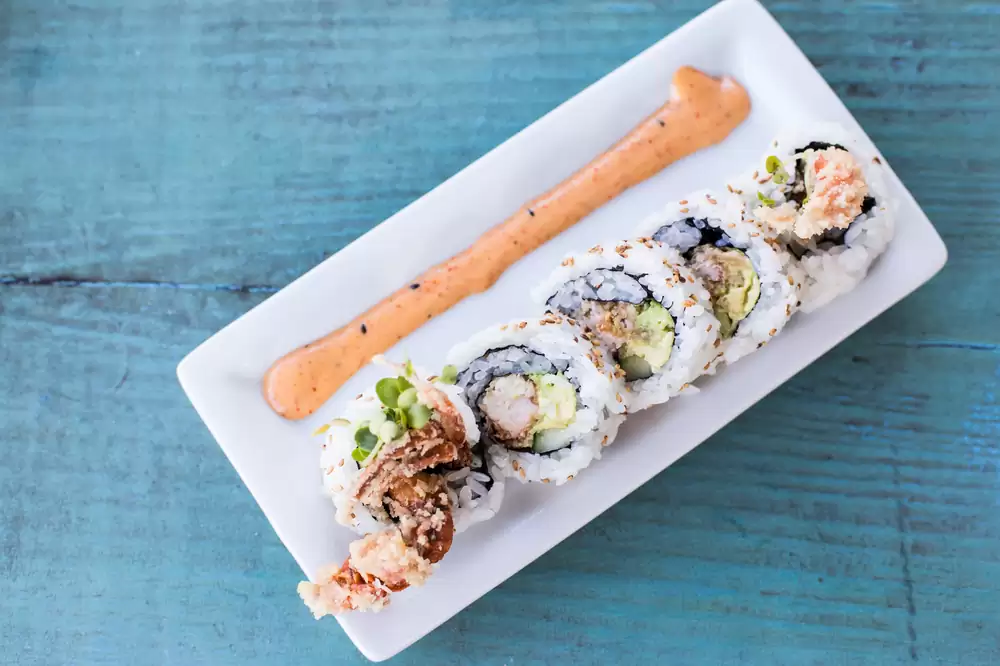How Many Calories Are in a Typical Spider Roll? A Detailed Guide

If you’re a fan of sushi, you’ve probably heard of the spider roll. This popular sushi dish is a favorite for many because of its unique flavors and textures. But have you ever wondered, “How many calories are in a typical spider roll?” Knowing the calorie content of your favorite foods can help you make better choices, whether you’re trying to eat healthier or just curious about what you’re consuming. In this article, we’ll explore everything you need to know about the calories in a spider roll, including its ingredients, how it fits into your diet, and some tips for making it a healthier option. You can also read this The Sony A7 IV
What is a Spider Roll Made Of?
A spider roll is a type of sushi roll that usually includes soft-shell crab as the main ingredient. The crab is often deep-fried, giving the roll a crispy texture. Besides the crab, a typical spider roll might contain a variety of other ingredients like cucumber, avocado, and spicy mayo. The roll is usually wrapped in sushi rice and seaweed, and it can be topped with extra ingredients like eel sauce or sesame seeds.
The combination of these ingredients gives the spider roll its distinctive taste. It’s a fusion of crispy, creamy, and savory flavors that make it a hit in sushi restaurants. But before you dive in, it’s good to understand how these ingredients contribute to the total calorie count.
How Many Calories Are in a Typical Spider Roll?
So, how many calories are in a typical spider roll? On average, a standard spider roll has about 500 to 600 calories. This number can vary depending on the size of the roll and the specific ingredients used. For instance, some restaurants might use more crab or additional toppings, which can increase the calorie count.
To break it down further, a typical spider roll contains approximately 40 to 50 calories per piece. Since a roll is usually cut into 8 pieces, you can estimate the total calories by multiplying this number by the number of pieces. Remember, these numbers are approximate and can vary based on the preparation method and specific ingredients.
How the Ingredients Affect Calorie Count
Understanding how the ingredients in a spider roll affect the calorie count can help you make more informed choices. Let’s take a closer look at some of the key components:
Soft-Shell Crab: This is the star ingredient of the spider roll. When deep-fried, it adds a significant number of calories. A small portion of fried crab can have around 150 to 200 calories. The type of oil used for frying can also impact the calorie count.
Sushi Rice: Sushi rice is another major contributor to the calorie content. A typical serving of sushi rice has about 200 calories. The rice is usually seasoned with vinegar, sugar, and salt, which adds a few extra calories as well.
Seaweed (Nori): Seaweed is relatively low in calories. A single sheet of nori contains about 10 to 20 calories. While it’s not a major contributor, it adds some nutritional value, including vitamins and minerals.
Vegetables and Sauces: Ingredients like cucumber, avocado, and spicy mayo also add to the calorie count. Avocado, for example, is high in healthy fats and has around 50 calories per slice. Spicy mayo, made with mayonnaise and spicy sauce, can add another 50 to 100 calories depending on the amount used.
Comparing Spider Rolls to Other Sushi Rolls
If you’re trying to watch your calorie intake, it might help to compare the spider roll to other types of sushi rolls. For example, a traditional California roll typically has around 250 to 300 calories, while a tuna roll has about 200 to 250 calories. The spider roll is higher in calories mostly because of the deep-fried crab and added sauces.
Sushi rolls with cooked ingredients or those that are fried generally have more calories compared to rolls that are made with raw fish and vegetables. If you’re looking for a lower-calorie option, consider choosing rolls that focus on fresh vegetables and lean proteins.
Tips for Enjoying Spider Rolls Healthily
Even if you love spider rolls, there are ways to enjoy them without overdoing it on calories. Here are some tips for making your sushi experience healthier:
- Watch the Portion Size: If you’re dining out, consider sharing a spider roll with a friend or ordering a smaller portion. This way, you can still enjoy the flavor without consuming too many calories.
- Skip the Extra Sauces: While sauces like eel sauce and spicy mayo add delicious flavor, they also add extra calories. Try asking for these sauces on the side or using less of them.
- Balance Your Meal: Pair your spider roll with a side of miso soup or a salad to create a more balanced meal. This can help you feel fuller without consuming excessive calories.
- Opt for Grilled or Steamed Alternatives: If you’re making spider rolls at home, consider grilling or steaming the crab instead of deep-frying it. This can significantly reduce the calorie content of the roll.
Nutritional Benefits of Spider Rolls
Despite their calorie content, spider rolls can offer some nutritional benefits. The soft-shell crab provides a good source of protein, which is essential for muscle growth and repair. Additionally, the avocado in the roll contains healthy fats that are beneficial for heart health.
Seaweed, which is used to wrap the sushi, is rich in vitamins and minerals, including iodine, which supports thyroid function. Cucumbers add crunch and hydration, while spicy mayo, though calorie-dense, often includes ingredients like chili peppers that can boost metabolism.
Conclusion
In summary, a typical spider roll contains about 500 to 600 calories, with variations depending on ingredients and preparation methods. Understanding the calorie content of your food can help you make better dietary choices and enjoy your favorite dishes in moderation.
Whether you’re a sushi lover or just curious about the nutrition of your meals, knowing how many calories are in a typical spider roll can be valuable information. By making informed choices and balancing your meals, you can continue to enjoy delicious sushi while staying on track with your dietary goals.








